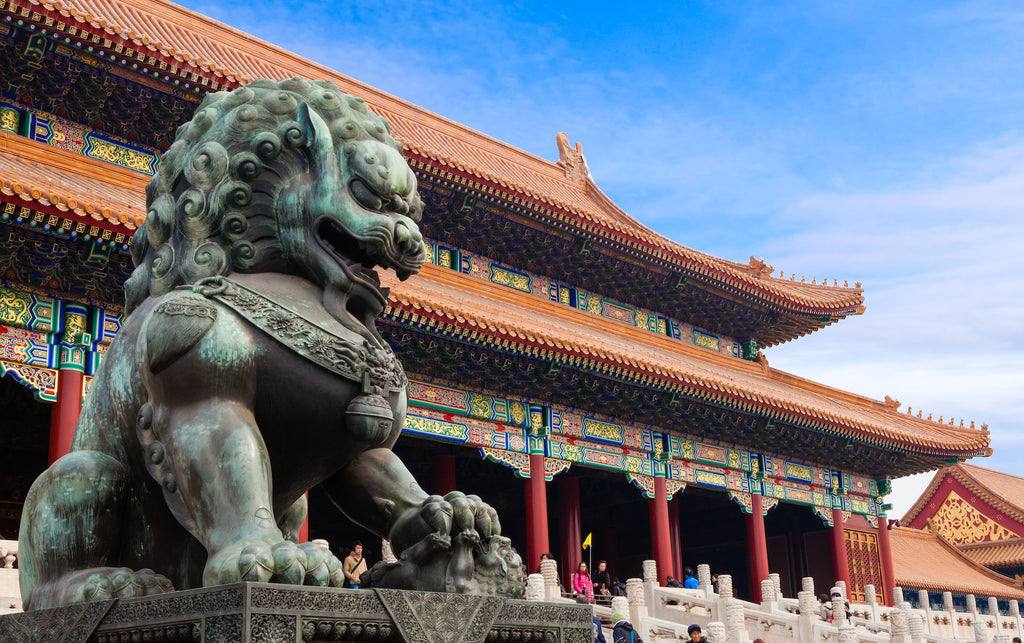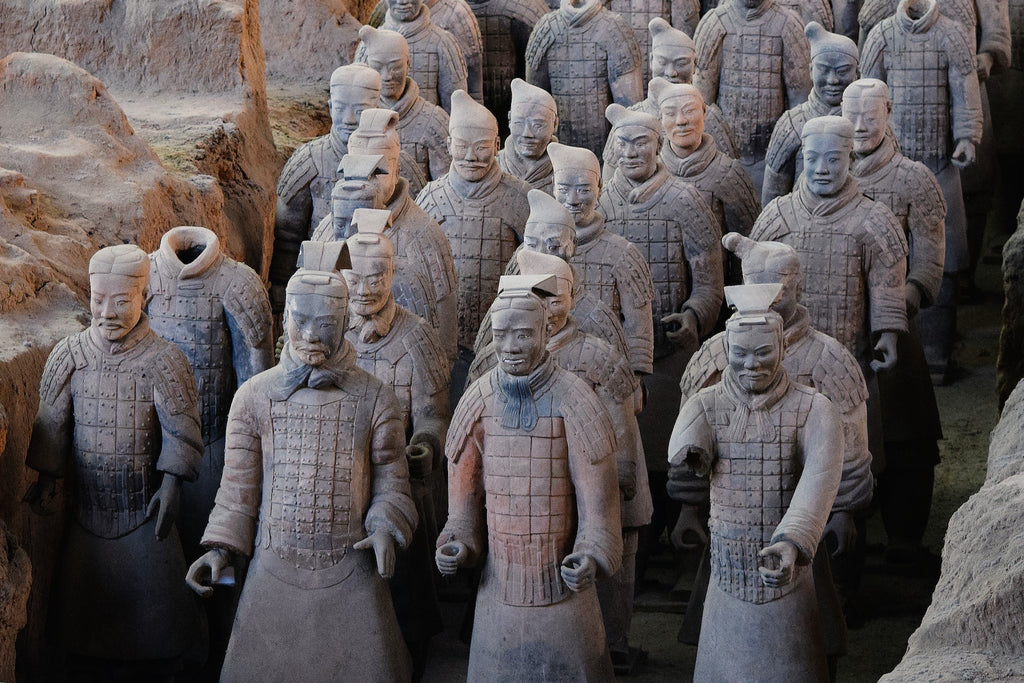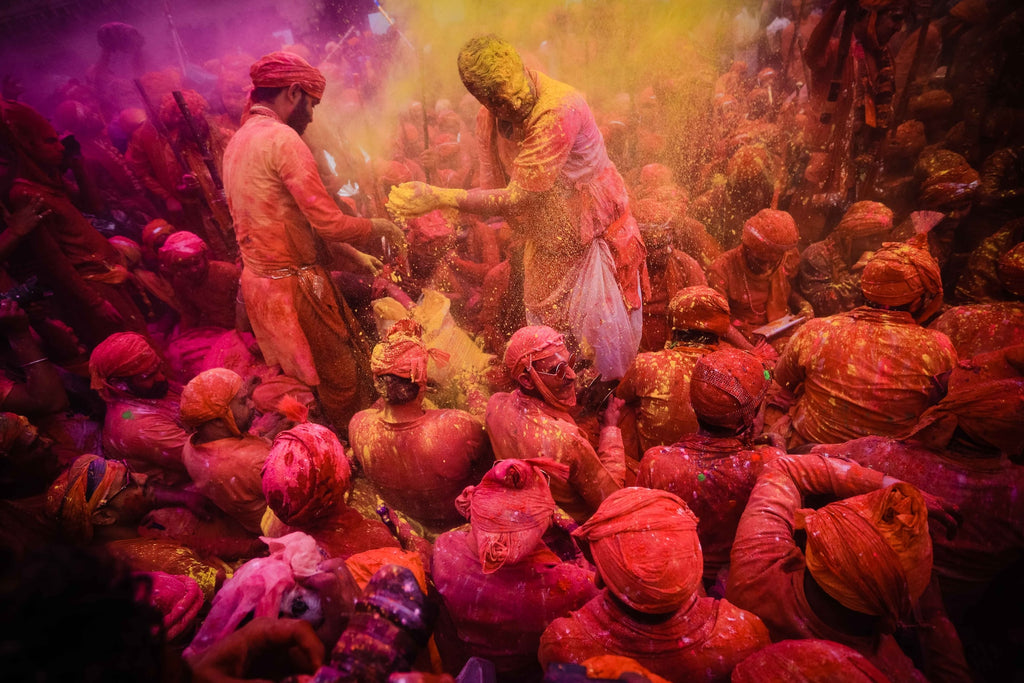The color vermilion, a striking shade of red, has been a cornerstone in the palette of human expression for millennia.
This journey through the history of vermilion will reveal how this pigment has been a witness and participant in the evolution of art, culture, and fashion.
From prehistoric cave paintings to the avant-garde canvases of modern times, vermilion has left an indelible mark on human history.
Table of Contents
- Origins of Vermilion: The Ancient Palette
- Vermilion in the Ancient World: Egypt, China, and Beyond
- The Middle Ages and Renaissance: Vermilion's Flourishing
- Industrialization: The Transformation of Vermilion
- Vermilion in Modern and Contemporary Art
- The Cultural Significance of Vermilion Today
- Vermilion's Role in Fashion through the Ages
- Vermilion in Literature and Folklore
- Conclusion: Vermilion's Timeless Legacy
1. Origins of Vermilion: The Ancient Palette
Vermilion's journey begins in the prehistoric era. The earliest recorded use of vermilion, derived from cinnabar (mercury sulfide), was found in cave paintings dating back to the Neolithic age.
These early artists sourced cinnabar from local deposits, grinding it into a fine powder to create a vivid pigment that has endured for thousands of years.
2. Vermilion in the Ancient World: Egypt, China, and Beyond
In ancient Egypt, vermilion was more than just a pigment; it was a symbol of life and victory over death. Used extensively in the decoration of tombs and artifacts, it was believed to protect the dead in their journey to the afterlife.
In ancient China, vermilion held a special place in the hearts of emperors and artisans. It was a symbol of joy and prosperity, extensively used in Chinese lacquerware and architecture. The Forbidden City in Beijing, with its vermilion walls, stands as a testament to the color's imperial significance.

Forbidden City in Beijing uses vermilion color liberally.
Cultural Highlight: The Terracotta Army
- The warriors were originally painted with vermilion, illustrating the importance of this color in ancient Chinese rituals and ceremonies.

You can see hues of Vermilion on The Terracotta Army.
3. The Middle Ages and Renaissance: Vermilion's Flourishing
During the Renaissance, vermilion was a prized possession in an artist's palette. Renowned artists like Michelangelo and Raphael used vermilion to depict divine beauty and passion in their works. This era saw the refinement of vermilion production, making it a staple for high art.
Iconic Artwork: Raphael's 'The Triumph of Galatea'
- This masterpiece showcases the brilliant use of vermilion in capturing human emotion and divine grace.
4. Industrialization: The Transformation of Vermilion
The Industrial Revolution marked a significant shift in the production of vermilion. The advent of synthetic vermilion made the color more accessible, changing its role from an elite artistic material to a common pigment.
Technological Insight: The Vermilion Patent
- Explore the first patent for synthetic vermilion, highlighting how technology democratized this once-exclusive color.
5. Vermilion in Modern and Contemporary Art
In the 20th century, artists like Henri Matisse and Mark Rothko explored vermilion in new ways, pushing the boundaries of its emotional and visual impact. Vermilion became a tool for expressing the complexities of the modern world.
6. The Cultural Significance of Vermilion Today
Vermilion continues to hold significant cultural, religious, and social meanings. It's a color of celebration in South Asian weddings, a symbol of power in political banners, and a hue of heritage in traditional arts.
Vermilion in Festivals Around the World
- Vermilion is used in various festivals and celebrations globally, from Holi in India to the Tomatina in Spain.

The Holi Festival in India liberally uses the Vermilion color in their celebrations.
7. Vermilion's Role in Fashion through the Ages
Vermilion has played a pivotal role in the evolution of fashion, symbolizing power, passion, and prestige. Its journey in the world of attire and adornment is as colorful as the hue itself.
Ancient Times: In ancient civilizations, vermilion dye was rare and expensive, often reserved for the garments of the elite. In Rome and China, it colored the robes of nobility and royalty, signifying high status and power.
The Renaissance: During the Renaissance, vermilion found its way into the wardrobes of the wealthy. The color adorned the dresses of aristocratic women and the uniforms of courtiers, symbolizing wealth and influence.
The 19th and 20th Centuries: With the industrial production of synthetic vermilion, the color became more accessible, leading to its incorporation into mainstream fashion. It became a popular choice for evening gowns and theater costumes, radiating elegance and boldness.
Contemporary Fashion: Today, vermilion continues to make a statement on the fashion runways. Designers use it to create impactful pieces, from vermilion evening dresses to striking accessories. The color remains a favorite for its ability to draw attention and make a bold statement.
8. Vermilion in Literature and Folklore
Vermilion's presence in literature and folklore is rich and varied, symbolizing a range of emotions and themes.
Vermilion in Mythology In mythology, vermilion is often associated with the divine and the powerful. In Hindu mythology, for instance, vermilion represents the feminine energy of Shakti, and is used in religious ceremonies.
Vermilion in Poetry and Literature Poets and writers have long been inspired by the color vermilion. It often appears in poetry to evoke passion, beauty, and sometimes danger. In literature, vermilion is used to paint vivid scenes or symbolize deep emotions.
Folklore and Traditions In folklore, vermilion is imbued with various meanings. In many cultures, it is a color of luck and celebration, used in festivals and weddings. In others, it is a protective color, believed to ward off evil spirits.
Conclusion: Vermilion's Timeless Legacy
Vermilion's journey through history is a reflection of humanity's artistic and cultural evolution. From a cave painter's first stroke to a modern artist's abstract expression, vermilion remains a testament to the enduring power of color in human expression.
We invite you to share your experiences and stories with vermilion. How has this color touched your life? Have you seen it in art, fashion, or culture in a way that moved you? Join the conversation and share your vermilion story.
This extensive exploration into the history of vermilion is more than a mere chronicle of a color; it's a vivid narrative of human creativity, symbolism, and innovation.
As we delve into the depths of vermilion's past, we not only appreciate its aesthetic beauty but also understand its profound impact on our cultural and artistic heritage.








